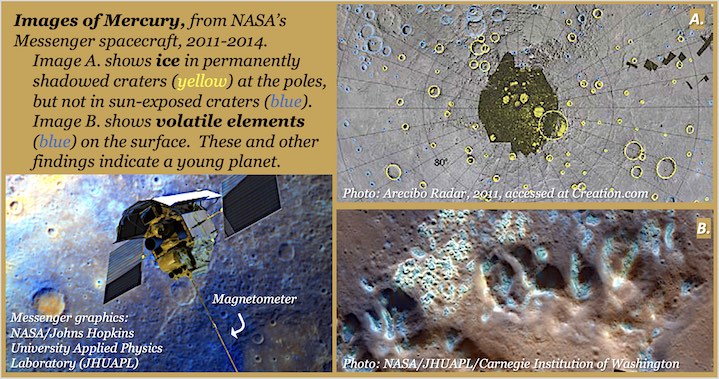Over at Evolution University’s astronomy department, they’re busy wrestling with how to make sense of data collected from telescopes and NASA space probes in our own celestial backyard, the solar system. Senators and congressman were told that science could answer big questions about the universe’s origins, if only a whiz-bang scientific payload was sent to neighboring planets. Not wanting to appear anti-science, they authorized large streams of money for impressive engineering space programs. No one tied future funding to a fundamental question: which model of origins best fits the data - evolution’s big bang theory, or the Bible’s account of creation?
Evolution’s “nebular hypothesis” goes like this: earth came into existence 4.5 billion years ago when a swirling cloud of gas settled from dust into rocks then planets. Here’s where the theory’s problems begin. Gas won’t condense on its own; it wants to expand. Space dust can’t clump beyond a dust bunny since its gravity isn’t strong enough. So evolution is already left in the dust with no path to a planet. But what saith the planets? What insights into origins do they provide? Let’s journey through our solar system, starting with Mercury.
Mercury is an odd-ball planet. It’s closest to the sun, so temperatures range from a lead-melting 8000 F to -2000 F on its long nights. This is because it rotates only 3 times for every 2 orbits around the sun. In 1974, NASA’s Mariner 10 detected a strong gravitational pull; thus, Mercury is very dense, having a 40% iron core. Evolutionary models says it can’t be this dense, so they claim it got dense after a big asteroid impact – yet there’s zero evidence for this. Mariner also discovered a magnetic field (1% the earth’s strength), which it’s not supposed to have. Evolution’s only source for a planetary magnetic field after billions of years is a hot liquid core, but the same theory also insists such a tiny planet should have grown solid eons ago. Imagine their groans when deep space radar revealed a rotational wobble indicating a liquid core. These findings argue against evolution. [1]
In 2011, the Arecibo radar detected bright reflections near the poles. NASA’s next spacecraft, Messenger, orbited Mercury from 2011 into 2015. Messenger confirmed the presence of billions of tons of frozen water-ice in the permanent shadows of polar craters. Ice in shadows is more likely to survive thousands not millions of year. Evolution has no explanation for this, since water shouldn’t be there; it should have boiled away millions of years ago. Messenger also found large concentrations of actively decaying sulphur and potassium. These volatile elements boil away easily, so evolution shouldn’t find these so close to the sun. Both findings indicate a young planet (see photos).
In 1983, creation scientist Dr. Humphreys developed a planetary model for magnetic fields based on 2Peter 3:5. He made two predictions: (i) Mercury’s magnetic field by 2011 would be 4-6% weaker than what Mariner found, and (ii) they’d find a ‘remaining-permanent’ or remanent magnetization [RM] [2]. Evolution predicted the complete opposite (i.e, a stronger field, no RM). After hundreds of orbits, Messenger found an 8% magnetic field decrease, meaning its magnetic field is decaying. NASA also detected a large amount of RM in a chunk of magnetized crust. These strongly indicate Mercury’s origin of a few thousand years ago and the Bible’s creation account. [3]
David wrote, whither shall I flee from thy presence? If I ascend up into heaven, thou art there. Even Mercury confirms Genesis 1.
[1] Spike Psarris, “What You Aren’t Being Told About Astronomy: Our Created Solar System”, Creation Astronomy DVD, 2009, and “Mercury: The Tiny Planet That Causes Big Problems for Evolution”, Creation.com, Sept. 2004.
[2] D. Russell Humphreys, “Mercury’s Magnetic Field is Fading”, Journal of Creation 26(2), 2012
[3] D. Russell Humphreys, “Mercury’s Crust is Magnetized”, Creation.com, July 2012
Like this? Consider sharing it to Facebook by clicking the linked icon below.
